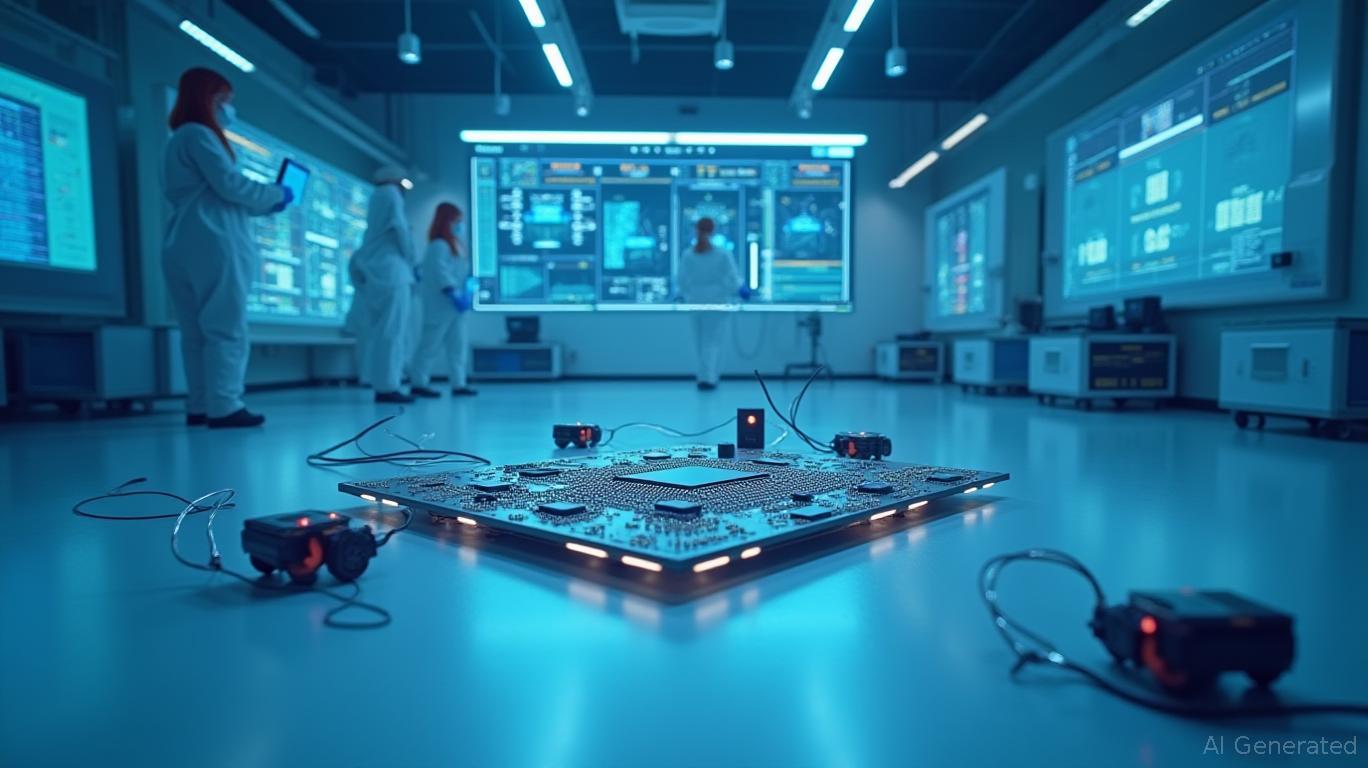Renesas Electronics' RA2L2 MCUs: Pioneering the Future of Low-Power IoT and Peripherals
The global market for low-power
devices and peripherals is on a rapid growth trajectory, fueled by the proliferation of wearable tech, gaming peripherals, and smart home ecosystems. Amid this shift, Renesas Electronics Corporation has positioned itself as a front-runner with its newly launched RA2L2 microcontroller (MCU) group—the first to support the USB-C Revision 2.4 standard. This move not only underscores Renesas' technical prowess but also highlights its strategic play to dominate a segment where power efficiency and design flexibility are paramount.
The USB-C 2.4 Standard: A Turning Point for Power Efficiency
The USB-C Rev. 2.4 standard introduced stricter voltage detection thresholds (0.613V for 1.5A and 1.165V for 3.0A), enabling more precise power delivery while minimizing energy waste. Renesas' RA2L2 MCUs are the first to fully comply with these specifications, making them ideal for devices requiring reliable 15W (5V/3A) power delivery. This capability is critical for gaming peripherals (e.g., mice and keyboards) and IoT sensors, where consistent power management ensures longevity and user satisfaction.
Ultra-Low Power: A Competitive Edge
The RA2L2's core advantage lies in its ultra-low power architecture, engineered to meet the demands of battery-operated devices. Key metrics include:
- Active mode current: 87.5 µA/MHz, ensuring efficient processing.
- Standby current: As low as 250 nA, extending battery life in applications like USB data loggers and charge cases.
- Independent low-power UART: Allows systems to wake up on data receipt from Wi-Fi/Bluetooth modules, reducing latency and power drain.
These features directly address the pain points of designers seeking to balance performance, battery life, and cost—a trifecta critical for mass-market IoT adoption.
Cost-Saving Design: Reducing Complexity, Boosting Profitability
Renesas' strategy goes beyond hardware. The RA2L2 integrates multiple interfaces (USB-FS, CAN, I3C, and LP UART) onto a single chip, reducing external component counts by up to 30% compared to competing solutions. This simplifies PCB layouts, cuts manufacturing costs, and shortens time-to-market—a significant advantage in competitive markets like gaming peripherals, where speed and cost efficiency are king.
The Flexible Software Package (FSP) further amplifies this value. By providing pre-optimized middleware, RTOS support, and drivers, the FSP eliminates the need for custom software development, slashing engineering hours and risks. For instance, Renesas' “Winning Combinations” program offers over 400 pre-vetted system architectures (e.g., USB data loggers with GNSS or gaming keyboards), enabling clients to launch products 2x faster than with traditional approaches.
Market Positioning: A Leadership Play in IoT and Peripherals
Renesas is targeting three high-growth segments:
1. Portable IoT Devices: Wearables, health monitors, and smart sensors rely on the RA2L2's low-power and USB-C 2.4 compliance.
2. Gaming Peripherals: The global gaming hardware market is projected to reach $36 billion by 2027, and Renesas' support for precise power delivery positions it as a go-to partner for manufacturers like Logitech and Razer.
3. Industrial IoT: The RA2L2's wide temperature range (-40°C to 125°C) and robust security features (e.g., TRNG, Unique ID) make it indispensable for industrial sensors and smart infrastructure.
Investment Implications: A Strong Thesis for Long-Term Growth
Renesas' first-to-market advantage with USB-C 2.4 and its ecosystem-driven strategy create a high barrier to entry for competitors. With over 3.5 billion MCUs shipped annually, the company already holds a 17% share of the global MCU market—a position it can expand by capitalizing on its leadership in low-power IoT.
Investors should monitor:
- Adoption rates: Penetration in gaming peripherals and industrial IoT.
- Ecosystem expansion: Growth in “Winning Combinations” and FSP partnerships.
- Competitor responses: How rivals like STM or Texas Instruments address USB-C 2.4 compliance.
Risks and Considerations
While Renesas' innovations are compelling, risks remain:
- Market saturation: Competitors may quickly replicate USB-C 2.4 support, diluting margins.
- Supply chain constraints: Global semiconductor shortages could delay product launches.
Conclusion: A Pioneering Play in the IoT Era
Renesas' RA2L2 MCUs are more than a product—they're a strategic ecosystem designed to dominate the low-power IoT and peripherals space. With USB-C 2.4 leadership, ultra-low power efficiency, and a developer-friendly ecosystem, Renesas is well-positioned to capture a significant chunk of a market expected to grow at 12% CAGR through 2030. For investors, this represents a compelling opportunity to ride the IoT wave with a company that's not just keeping pace but setting the standards.
Investment recommendation: Consider a long position in Renesas for investors with a 2–5 year horizon, particularly if valuations dip due to near-term semiconductor volatility. Monitor partnerships and design wins in gaming and industrial sectors as key catalysts.

Comments
No comments yet